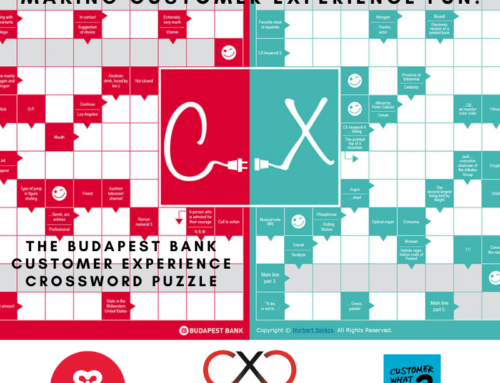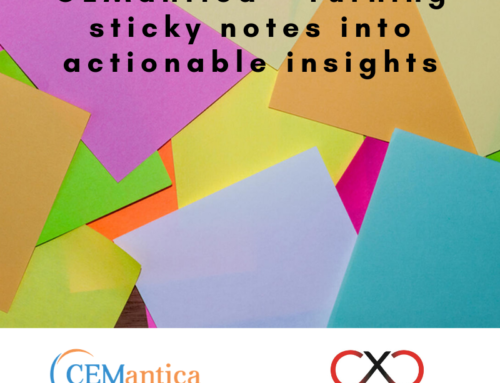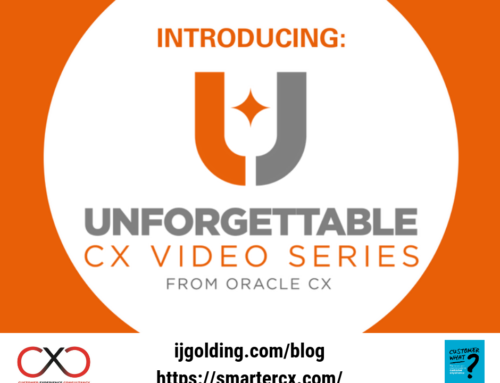Understanding, managing and improving the customer experience is a skill set that has led to the formation of a new profession. The proliferation of customer experience professionals has led to the creation and adoption of a variety of methods, techniques and approaches to putting the customer at the heart of the organisation.
Many ‘customer experience frameworks’ have been formed to help and guide businesses to understand what and how to achieve a customer focussed culture. This post explores how simple a framework for customer experience management can be, and looks at some of the varieties of framework on offer.
Firstly, I must point out that there is no right or wrong answer when it comes to choosing to adopt a ‘framework’. Depending on the ‘state’ of your business, it may not be appropriate to adopt a framework at all. For example, organisations that have very well established customer experience ‘cultures’, may find the structure of a specific framework unnecessary – businesses that are starting their evolution are far more likely to need the formality that a framework provides.
So what exactly do I mean by a customer experience framework? To explain, let me talk you through the framework that I use – and that is embodied by the image at the beginning of this post. In my opinion, all organisations that are looking to be truly and genuinely customer centric, can do so by embedding three core elements of a customer experience framework. The elements of STRATEGY, MEASUREMENT and PEOPLE will together ensure that the organisation is ultimately aligned to understand how well it is able to consistently meet customer expectation with a fully engaged and motivated workforce. I will walk you through the elements, one by one:
STRATEGY
The starting point for any business is to determine its ‘customer experience strategy’. This is a concept that is unfortunately lacking in many organisations today. The strategy will incorporate questions such as ‘what is our proposition?’; ‘why do customers transact with us?’; ‘why do customers come back (or not)?’; ‘what do we want our business to be for customers?’.
Defining the CX strategy is not that simple, but it is imperative. If you do not know what your strategy is, your employees will not know – and your customers will certainly not know. Not knowing your strategy means that employees do not know what direction they are going in, and customers are unlikely to know what to expect. The result is that you will fail to meet customer expectation more than you will meet it.
Businesses that have very well-defined CX strategies are not always the ones you expect. I always argue that Ryanair…..yes Ryanair…..have a very well-defined strategy. It is very well-defined because it is so clear and evident to the consumer and employee. We all know who Ryanair are, what they offer (or not!), and how they work. If you do not buy in to the Ryanair proposition, like me, you will not transact with them. However, millions of consumers do, because they are prepared to accept the proposition for the price that is offered. Ryanair meet customer expectation far more consistently than other, more ‘up-market’ airlines.
MEASUREMENT
Once your business has a defined strategy, then next element of my suggested framework must be assessed. I call this element MEASUREMENT. If you know what your proposition is, you should then be able to continuously MEASURE how capable you are of delivering it. Measurement is the part of the framework where you complete the ‘customer’ piece of the jigsaw. It is where a business must consider what insight or fact is necessary to help understand whether or not you are capable of giving customers what they want and need.
I split measurement into four bits. To measure how good you are at doing something, it is first necessary to determine what that ‘something’ is. It is this stage of the framework where it is necessary to have a clear understanding of the ‘customer journey’. Customer journey mapping is a topic that could form a blog post in its own right. It can be as simple or complicated as you need it to be. The key is that you are able to identify the customer touch points, or ‘Moments of Truth’, in the end to end customer journey. These are all the points in your customer journey where a customer directly interacts with you. Once you know this, you are then able to identify what I call ‘internal capability’ – how good do you think you are at delivering the ‘Moments of Truth’?
Measuring customer facing processes is sadly all too uncommon in businesses. Organisations that have not thought about what they do as a ‘customer journey’, are most likely to measure internally focussed processes that are more likely to benefit the internal stakeholder, more than the customer. Creating a transparent view of how capable your customer facing processes are is critical.
Once you have measured the internal view, it should then be possible to correlate it with the external view – what does the customer think. This is where all forms of ‘voice of the customer’ measurement come in to play. Whether you choose CSat, NPS or Customer Effort Score, what is important in this stage of the framework is to be able to capture the true effect of what your journey delivers – customer perception. Granular customer feedback mechanisms will enable you to determine where in the journey the customer thinks your problems are. being able to align this to your internal measurement is the key to determining ‘priorities for improvement’.
This is the final bit of the MEASUREMENT stage of the framework. Measuring is important – but it is a means to find out what it is you must IMPROVE. Continuous improvement of the customer journey is what this stage focusses on. It will show you where you are today, and how far away from achieving your strategic goals you are. A continuous improvement plan will then plot you on the course to closing the gap.
PEOPLE
The third stage of my proposed framework is what I will always describe as ‘the most important, but most difficult’. It is very difficult to achieve strategic goals, and/or improve a business, unless or until that business has fully engaged people. Engagement is important to any organisation, but in the terms of a customer experience framework, just being engaged with your job is not enough. A few years ago, O2 – a business that many forget used to be BT Cellnet – invented the principle of the O2 Fanbook. They believed that for their customers to become fans of O2, their employees must become fans first. It is a simple concept that resonates so well. For a business to be truly customer centric, it must have people who care. It must have employees who are passionate advocates of that business. They have become advocates because they believe in he product; the strategy; the customer. They know that the organisation cares for them, and in turn they care for the organisation.
Richard Branson tweeted recently that ‘your employees will treat your customers in the way you treat them’ – wise words from a business legend. Ask yourself the question – are you a fan of the business you work for? People engagement and advocacy is all about the CULTURE that underpins the organisation. This is why it is often so difficult. Changing an organisational culture is not a quick fix. It can take years, and it requires strong and committed leadership.
This customer experience framework works. I can say this as I have deployed it in a variety of businesses – B2C and B2B. But as I said at the beginning of this post, it is just one way of approaching the issue of customer experience management. Below are a variety of other frameworks that are equally as applicable. It all depends on your preference. The web link for all of the featured frameworks is featured below each image:
http://www.customerinput.com/customerexperience/framework/
http://www.foviance.com/what-we-do/our-approach/customer-experience-framework/
http://howtoexperience.wordpress.com/tag/cem-framework/
http://www.nunwood.com/services/customer-experience-management/

http://www.xperience-associates.com/
If you are interested in the topic of Customer Experience, and would like to find out more, please do not hesitate to contact me at ijgolding@hotmail.com As always, your comments on this or any of my blog posts are very welcome.












Ian,
Thanks for giving a mention to our CX Framework, its very much appreciated.
CX transformation is 80% change management and 20% CX management. Both need a structured approach and appropriate governance to maintain momentum. There is no right place to start, but I think companies would benefit from starting with understanding their customer journey before jumping into trying to measure it.
Its like the old Morcambe and Wise Andre Previn piano sketch, companies but the right building blocks in place, but not necessarily in the right order.
We’ve added a new video clip to show how CX Mapping can be done online.
http://www.xperience-associates.com/our-services/touchpoint-dashboard/
I have a feeling we’ll bump into each other at a CX event in 2013!
Alan
Xperience Associates
[…] Ian Golding’s blog STRATEGY – MEASUREMENT – PEOPLE, he provides a simple framework for managing customer experience. Here’s how Ian breaks it […]
[…] A few weeks ago, I introduced my perspective on the significance of a customer experience framework and how it can help an organisation to focus its customer experience efforts (https://ijgolding.com/2013/03/26/strategy-measurement-people-a-simple-framework-for-managing-customer…) […]
[…] You can read the post here – https://ijgolding.com/2013/03/26/strategy-measurement-people-a-simple-framework-for-managing-customer… […]
[…] of their brand. This is an essential ingredient in any customer experience management framework (https://ijgolding.com/2013/03/26/strategy-measurement-people-a-simple-framework-for-managing-customer…). As an independent consultant, I no longer have the pleasure of directly managing employees. […]
[…] to recognise that change realises opportunities. I strongly believe that the implementation of a Customer Experience Framework can help law firms to be the best they can be – for their partners, employees and customers. At […]